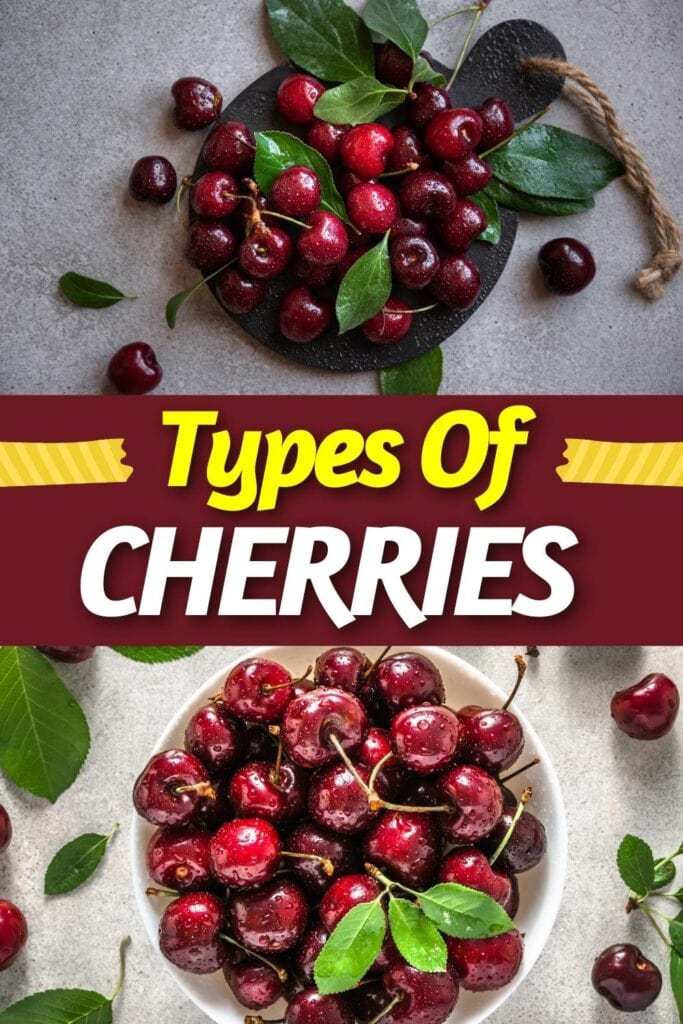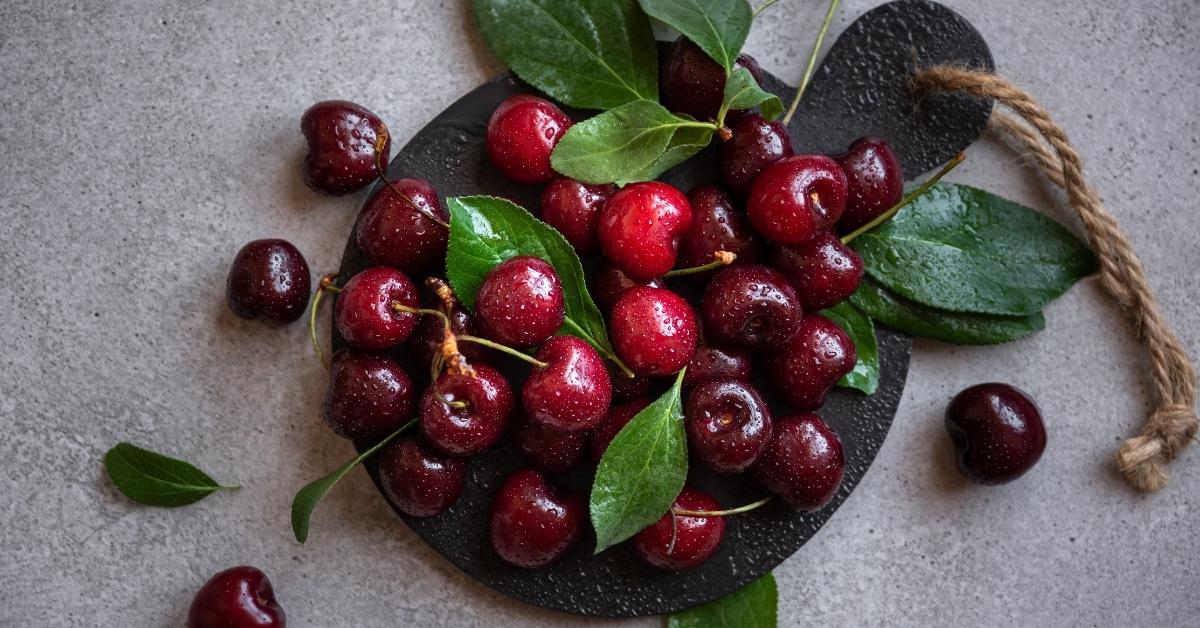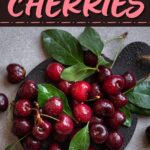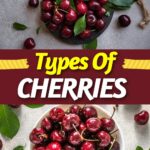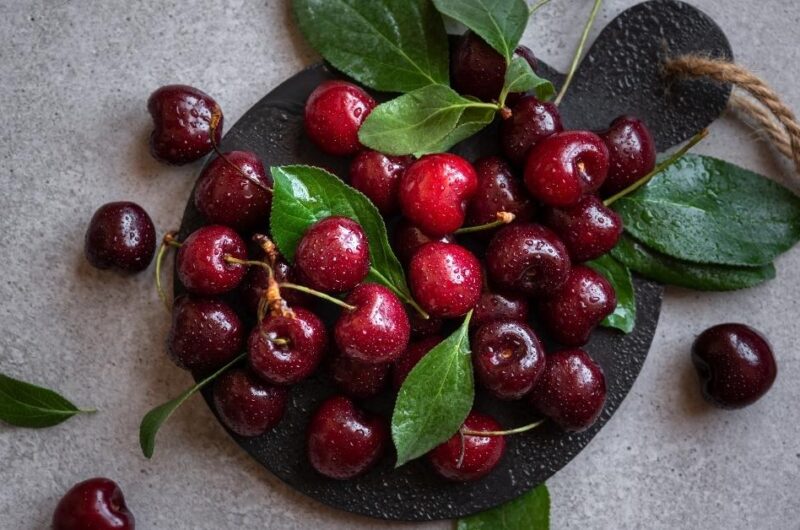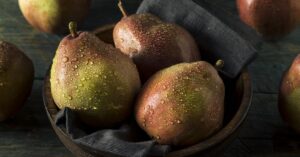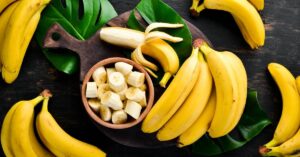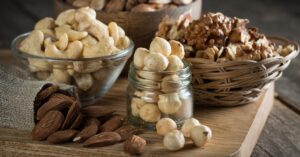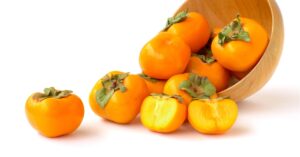Discover the many types of cherries in this cherry-fic catalog!
From the common Maraschino to the rare Black Tartarian, different cherry varieties have their own qualities that make them wonderfully unique.
Also known as the ultimate dessert topper, cherries should be a staple in your house if you consider yourself a sweet tooth.
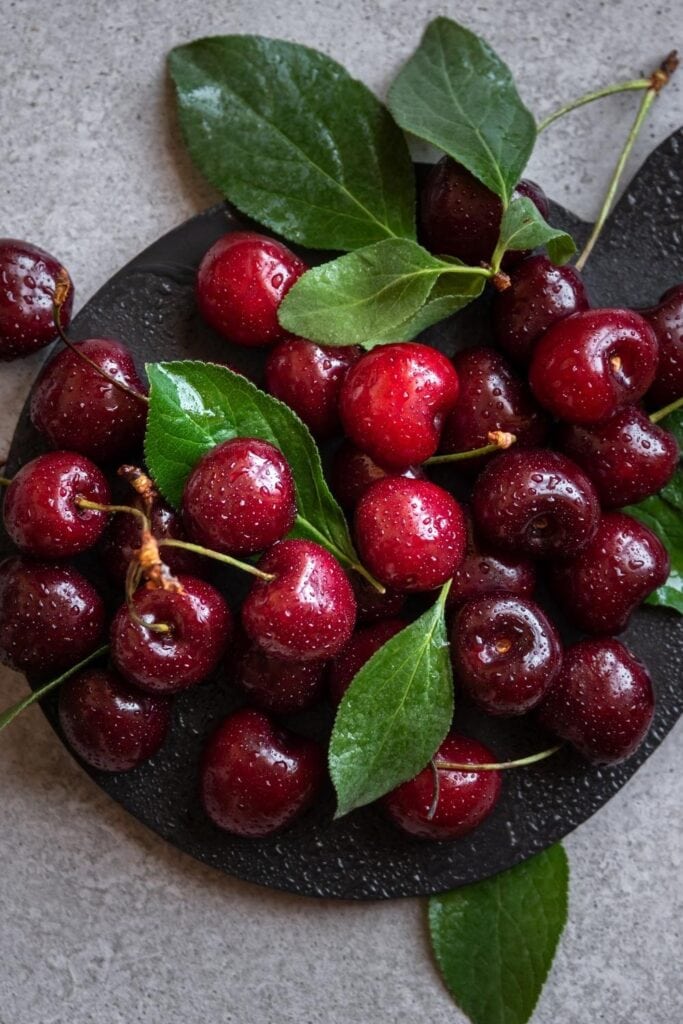
But did you know that there is more than just one type of cherry?
Plus, cherries also have other uses apart from being garnishes.
Whether you like your cherries firm and tart or sweet and juicy, there’s a type of cherry out there for you.
Read on to find out more about the different types of cherries.
Learn about their appearance and taste to how you can incorporate them into your meals.
25 Different Types of Cherries
Fun fact: there are over 1000 types of cherries grown in the US alone!
These cherry varieties are further subdivided into two main categories: sweet cherries and sour cherries.
Let’s get to know them better, shall we?
Sweet Cherries
Sweet cherries are the cherries sold in supermarkets. They’re the ones you’ll plop on a bowl and snack on.
Their colors range from pinkish-yellow to deep red to almost black.
High in natural sugars, these cherries are wonderfully sweet and best enjoyed fresh.
There are over 900 varieties of sweet cherries, but their taste profiles are very similar it’s hard to tell them apart.
Here’s a challenge for you. After giving this article a read, get different types of sweet cherries and see if you can distinguish their taste!
1. Bing Cherries
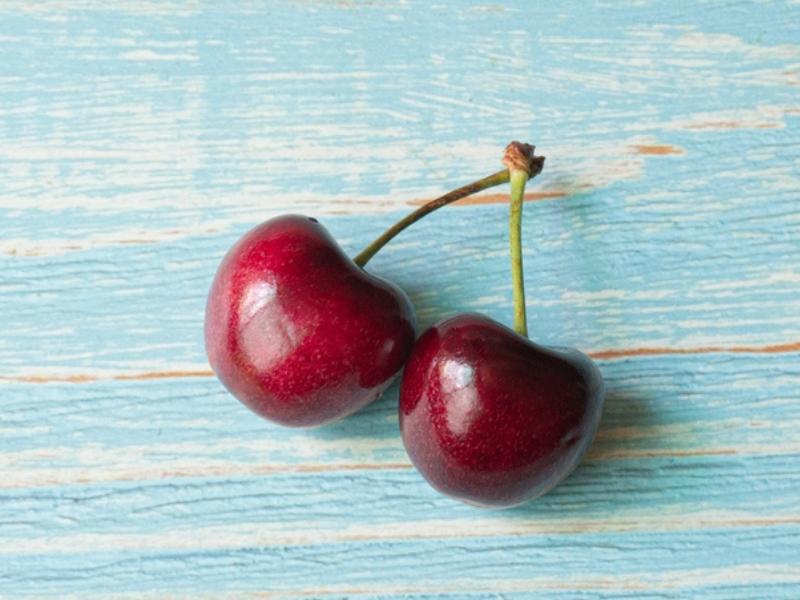
What image comes to mind when you hear the word cherry?
If it’s a heart-shaped fruit with smooth and glossy red skin, you’re thinking of a Bing cherry.
This cherry variety is firm, juicy, and sweet with a subtle tang. It’s the kind of cherry you top on ice cream and other desserts.
Fun fact: the Bing is a product of cross-pollination between a Royal Ann and a Black Republican. It gets its name from its inventor, Ah Bing.
Bing cherries are in season from May to July.
Tip: when buying Bing cherries, look for ones with a dark red hue. The darker the shade, the riper and sweeter they are.
2. Rainier Cherries
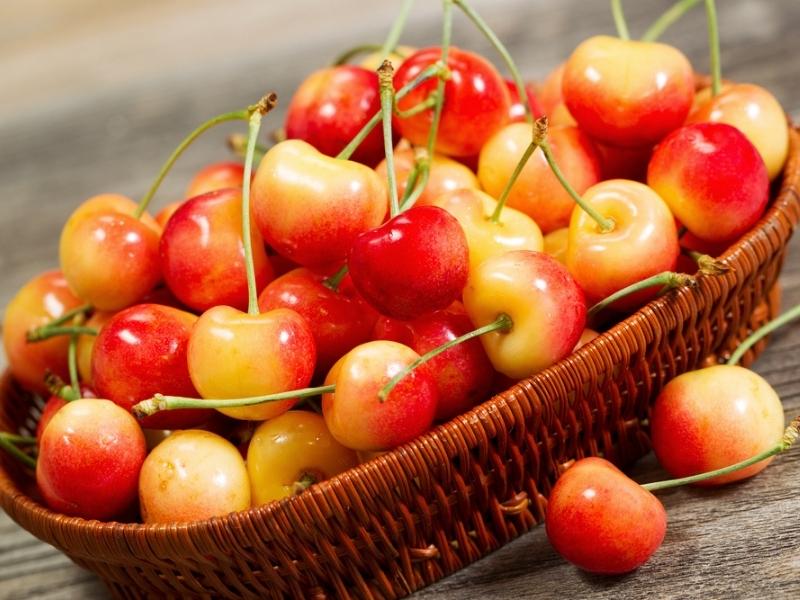
Rainier cherries are known for their beautiful blend of pink and golden-yellow hues.
A cross between Bing and Van cherries, they’re juicy and so intensely sweet they taste almost like candy.
These cherries are best eaten fresh, and should not be used for cooking, otherwise, they’ll lose their iconic colors.
They’re sensitive to rain, wind, and temperatures, and their peak season is relatively short, between late June to early July.
As such, they tend to be more expensive than other cherry varieties.
Fun fact: Rainier cherries are so beloved in the US that a special day has been designated to honor them.
July 11th is National Rainier Cherry Day.
3. Queen Anne Cherries
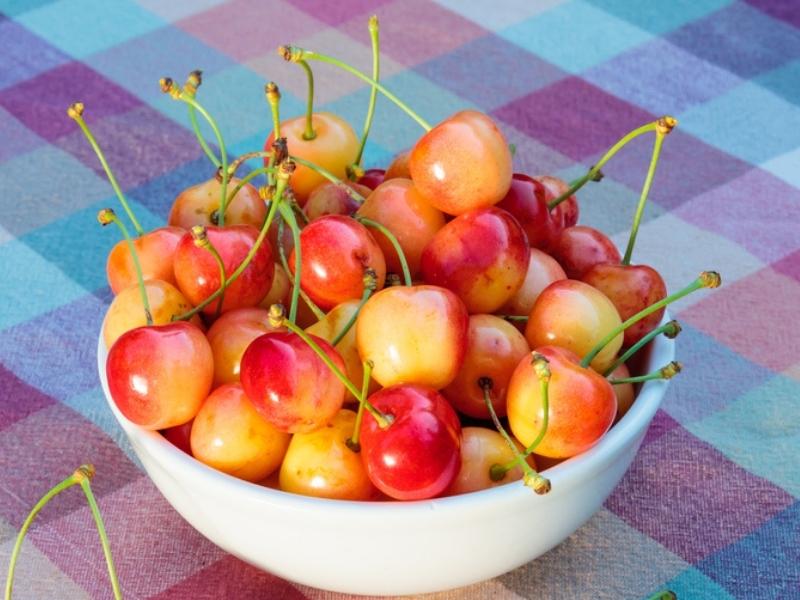
The cousin of Rainier, the Queen Anne cherry is another popular variety with pink and yellow hues.
Their flavors are far from similar, though. While Queen Anne falls under the sweet cherry category, its taste is more sour than sweet.
That said, this cherry is ideal for making jams and sauces.
Fun fact: Queen Anne cherries are frequently used to make Maraschino cherries.
Confused? Check out my explanation at the very bottom of the page!
4. Black Cherries
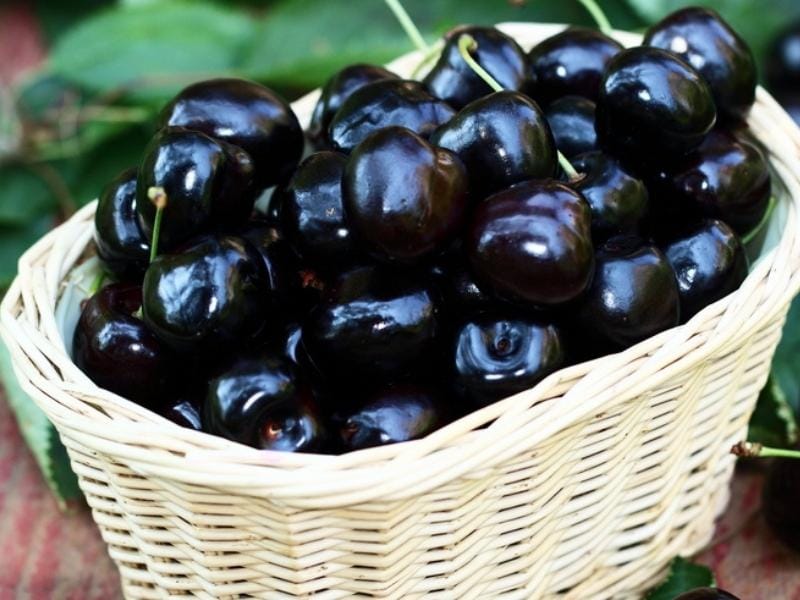
True to their name, black cherries are characterized by dark, near-black skin.
They start off orange and red and eventually turn dark purple to almost black as they mature.
Their sweetness makes them great for snacking, but they’re also an ideal mix-in to yogurt and baked goods.
They’re often used to make jelly, wine, rum, and brandy, as well.
Fun fact: Black cherries are also commonly used as an ingredient in cough medicines!
It’s used not just because of its flavor, but also because its tree bark works as a natural sedative.
5. Van Cherries
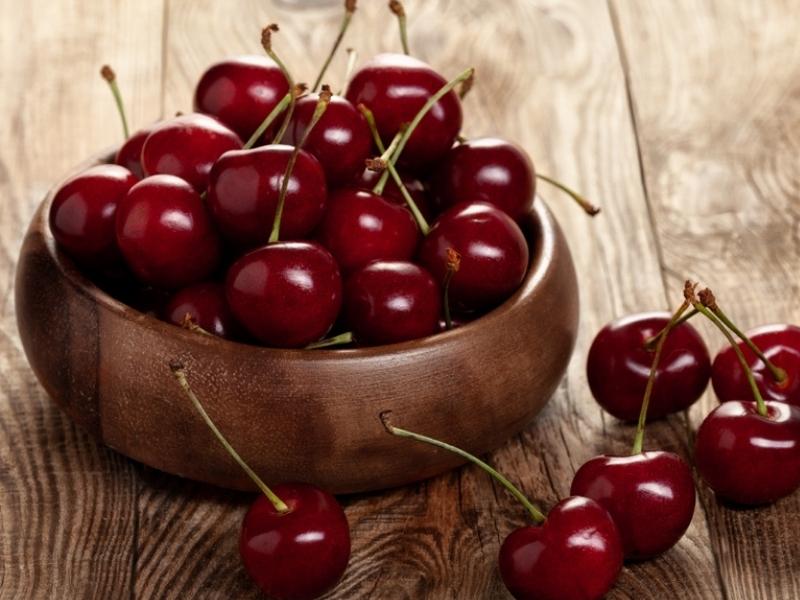
Van cherries are a Canadian variety with black skin and dark red flesh. It is firm, sweet, and delicious.
This cherry variety is a product of the Empress Eugenie tree.
But because this tree variety can’t bear fruit by itself, it has to open-pollinate with other cherry cultivars to produce van cherries.
Cherry trees that pair well with Empress Eugenie include Bing, Stella, and Montmorency.
Apart from the US and Canada, Van cherries are also grown in Norway and Australia.
6. Sweetheart Cherries
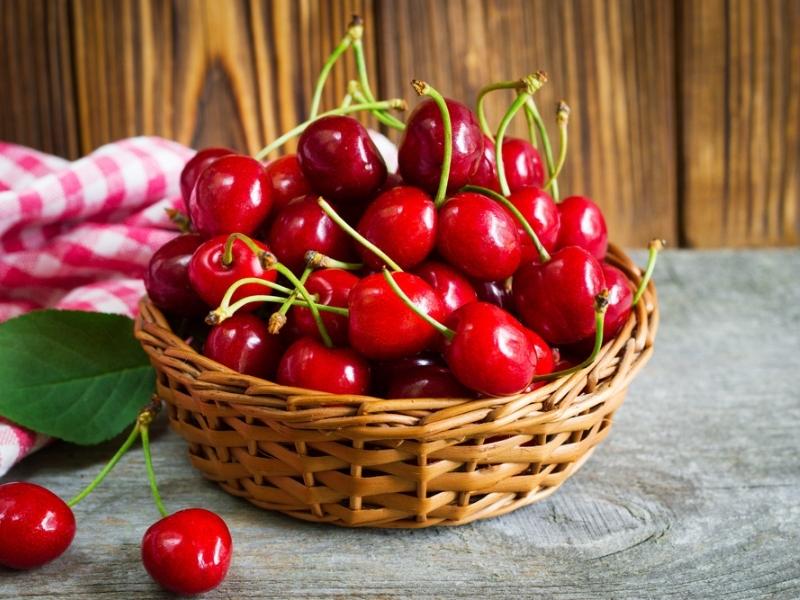
Sweetheart cherries are the love child of the Van and Newstar cherries.
Their flesh is as lusciously red as their skin, making them look so freakin’ adorable.
These cherries get their name from their sweet taste and heart-shaped appearance.
They’re sweet with a subtle acidity, which creates a lovely marriage of flavors.
Sweetheart cherries are late-ripening and are in season only in August.
7. Lambert Cherries
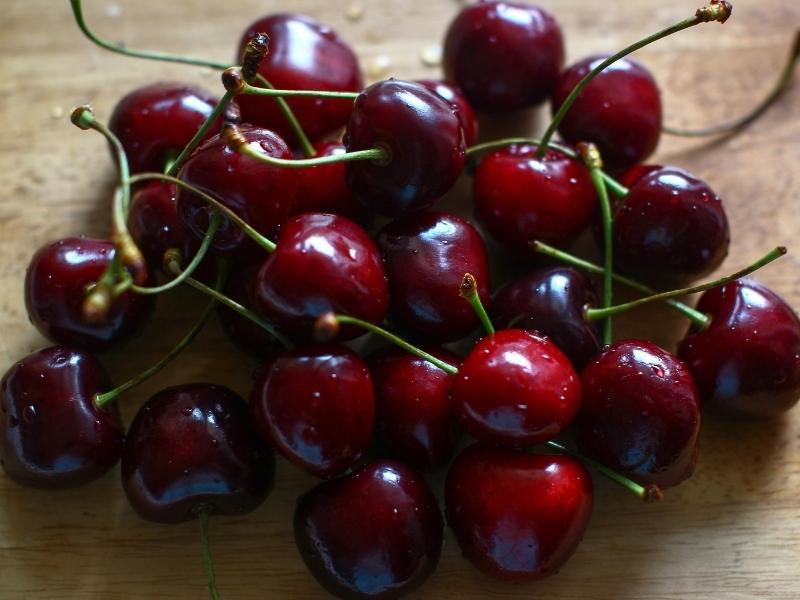
Lambert cherries are a large, heart-shaped cherry variety with a small pit.
Their colors range from bright to dark red. They’re crisp, juicy, sweet, and rich.
Their pleasant taste and texture profiles make them perfect for consuming straight after picking.
They’re also able to hold their crispness even when exposed to heat, making them ideal for cooking and baking.
Fun fact: the Lambert cherries got their name from their creator, American orchardist Joseph Hamilton Lambert.
They were invented in 1848, and in 1916, were considered the finest cherry variety in the country.
8. Chelan Cherries
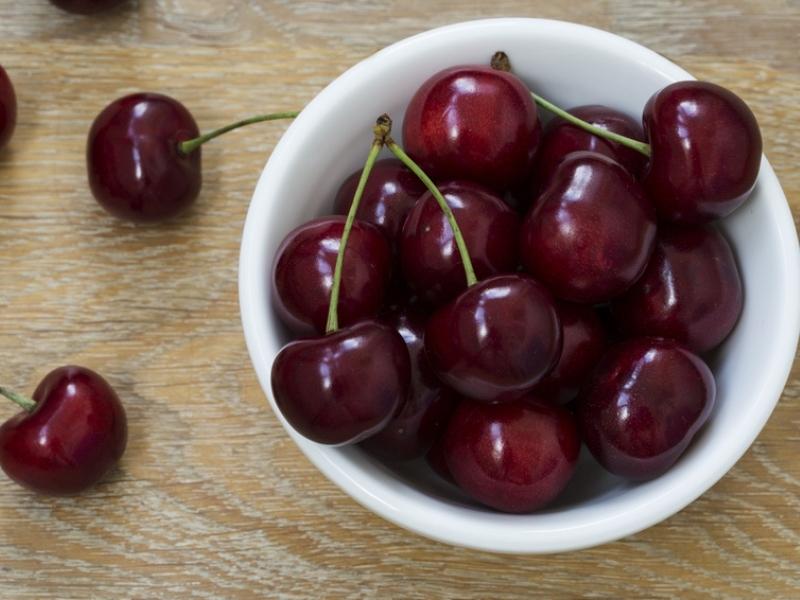
Chelan cherries are firm and juicy with a subtle sweetness.
They’re heart-shaped in appearance and have a deep mahogany hue, characteristics typical of most cherry varieties.
First cultivated in 1971 in Washington, the Chelan cherry is the first sweet cherry produced in the Pacific Northwest.
It’s the result of cross-pollination between the Stella and Beaulieu varieties.
Today, the cherry variety is also grown in Canada and Australia.
Chelan cherries are in season from late-Maty to mid-late June.
9. Tieton
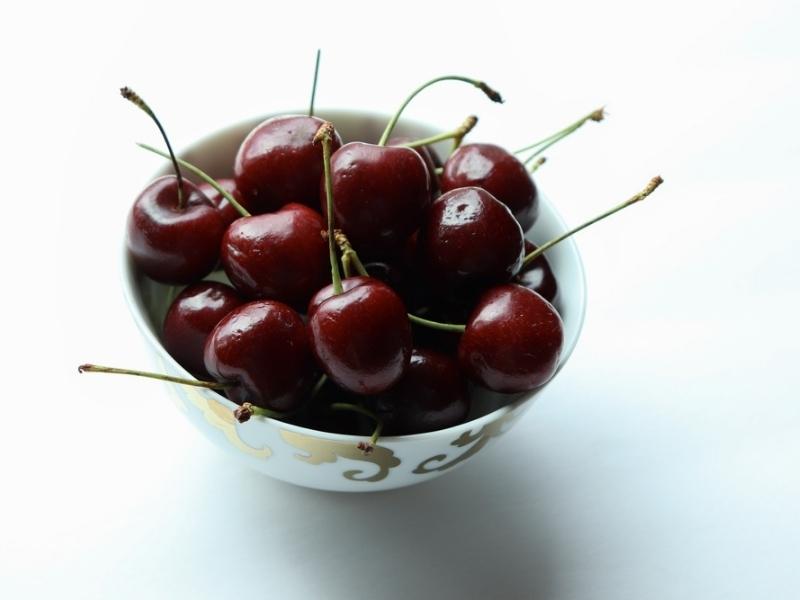
The love child between the Stella and the Early Burlat, the Tieton is a sweet cherry with a dark and glossy red hue.
Just like the Bing cherry, the Tieton is also heart-shaped and extra large.
Its sweetness and firm texture make it ideal for cooking and baking.
The Tieton cherry is prone to double-fruiting, an occurrence where two cherry fruits are conjoined and share a single stem.
While double cherries are perfectly fine to eat, this phenomenon happens when the tree is under stress.
Stressors include exposure to high heat and lack of water.
10. Utah Giant
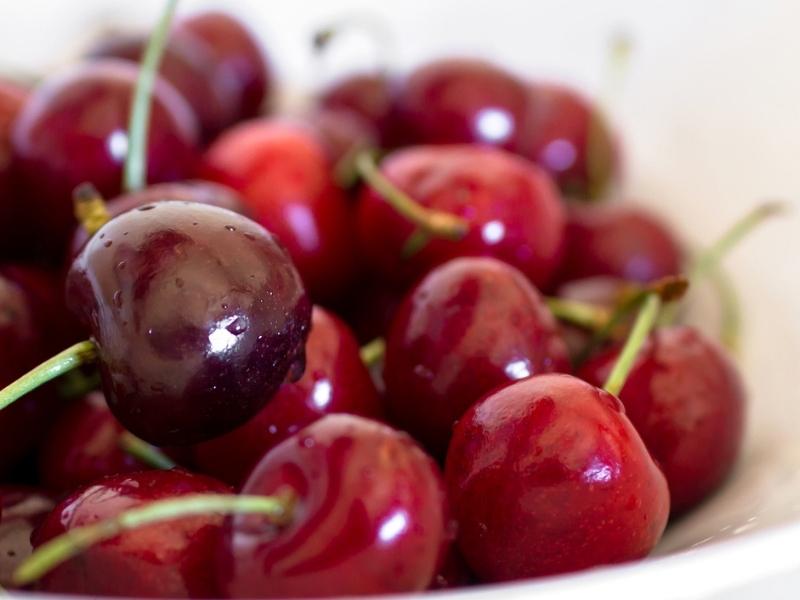
While these trees are only small to medium in size, their fruits are shockingly gigantic.
Their pits are relatively smaller, too, which means more flesh for you.
It’s awesome because these red-hued cherries burst with sweetness.
Plus, as a freestone, these cherries’ pits don’t stick to the flesh.
The tree isn’t self-pollinating, though, so you’ll have to crossbreed it with other cherry cultivars to bear fruit.
Utah Giant breeds well with Bing, Van, and Rainier trees.
11. Tulare
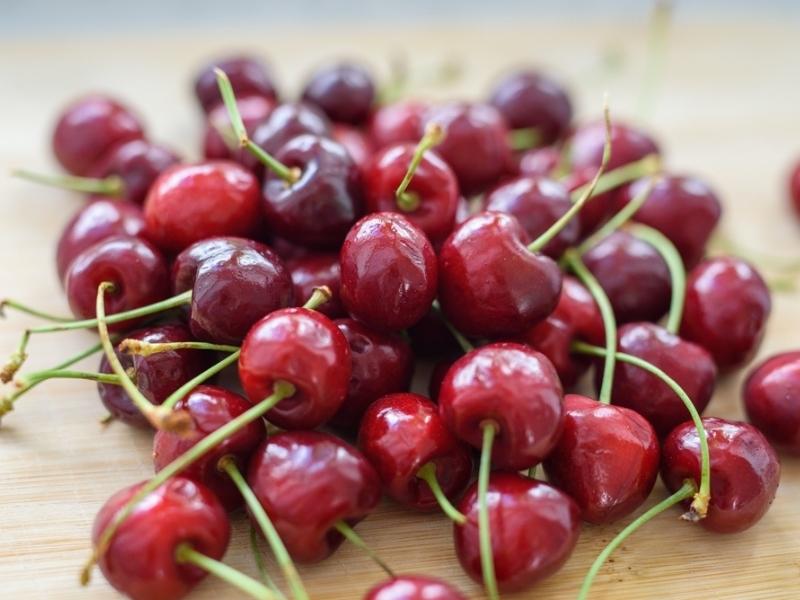
Another cousin of the Bing cherry, Tulare also has the perfect balance between sweet and tart flavors.
Its skin is smooth and red, while its flesh is juicy. It’s softer than the Bing, but it’s still firm enough for cooking and baking.
The Tulare is named after Tulare County in Southern California, where it was first discovered.
Non-self-fruiting, the Tulare tree has to be cross-pollinated with another nearby cherry tree to produce its sweet, heart-shaped fruit.
12. Lapins
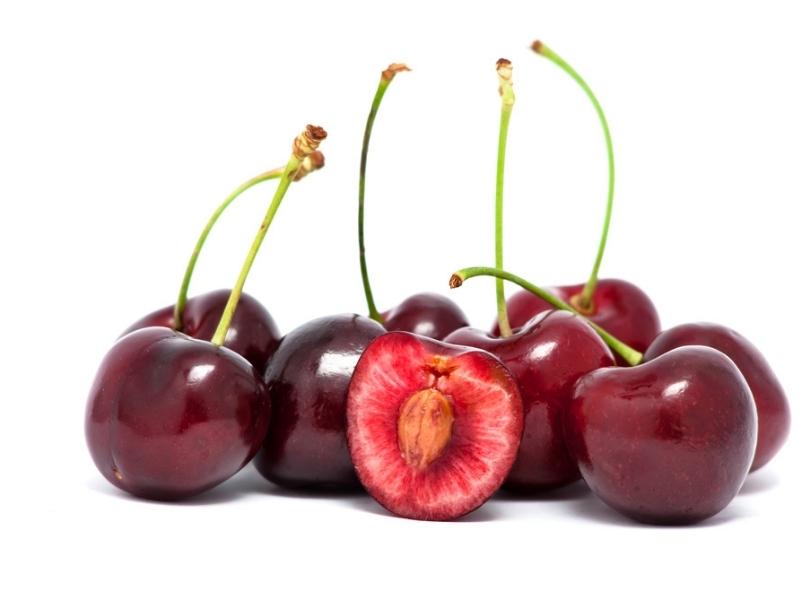
Lapins are cultivated in the Summerland Research Station by Canadian agronomist Karlis Lapins.
While they are a hybrid of the Van and Stella cherries, they resemble Bing cherries more.
What makes them extra special is that they’re sweet even before they reach maturity.
They’re also versatile. You can eat them fresh or use them to make juices, preserves, and baked goods.
Another great thing about Lapins is that they’re self-pollinating.
They produce fruit on their own and are also a pollinator for other cherry trees.
13. Stella
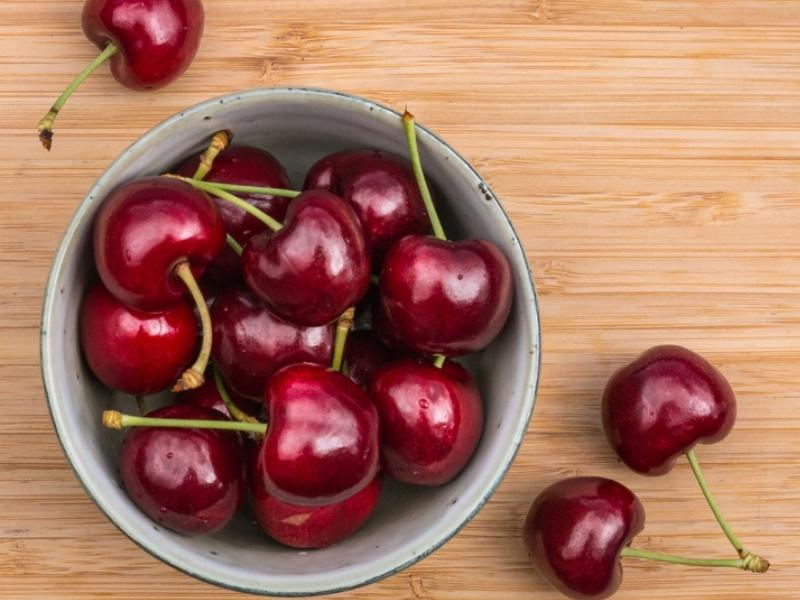
Stella cherries are large heart-shaped cherries with a dark red hue. They’re firm with a sweet and rich flavor.
If you plan on growing and cultivating cherries, planting a Stella tree is a great place to start.
As a self-fertile tree, the Stella is commonly used to pollinate other trees to produce different cherry varieties.
With the Stella tree, you can develop not just Stella cherries, but also Chelans, Tetons, Vans, and more.
14. Skeena
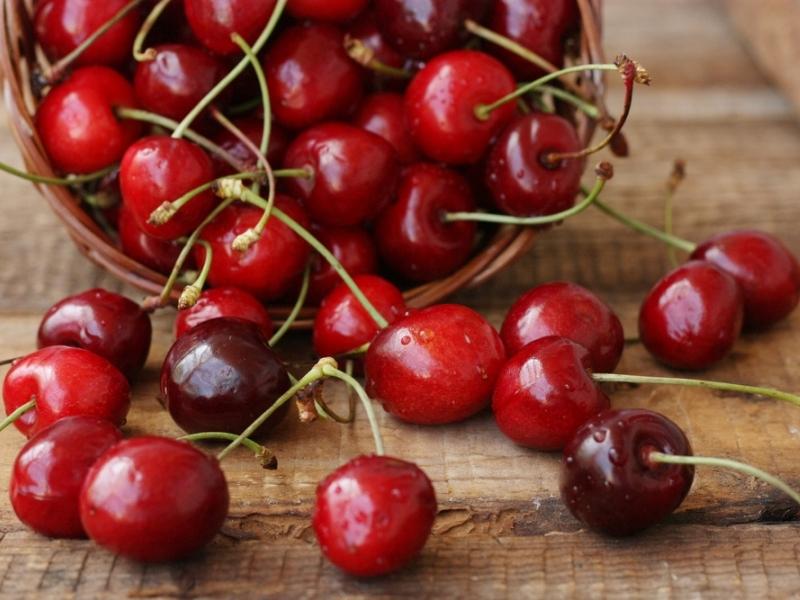
A Skeena is a high-quality, self-fruiting cherry cultivated in Canada.
It’s a cherry hybrid that also comes from two cherry hybrids, both of which are unnamed.
Both parent varieties are hybrids of the Stella cherry, so it’s safe to say that the Skeena comes from the Stella family tree.
Its smooth and dark red to black skin makes the Skeena wildly appealing.
Its fruit is large, with a firm and juicy texture and a sweet and tangy flavor.
They’re resistant to cracking, as well, making them a superior variety to other cherries.
15. Sylvia
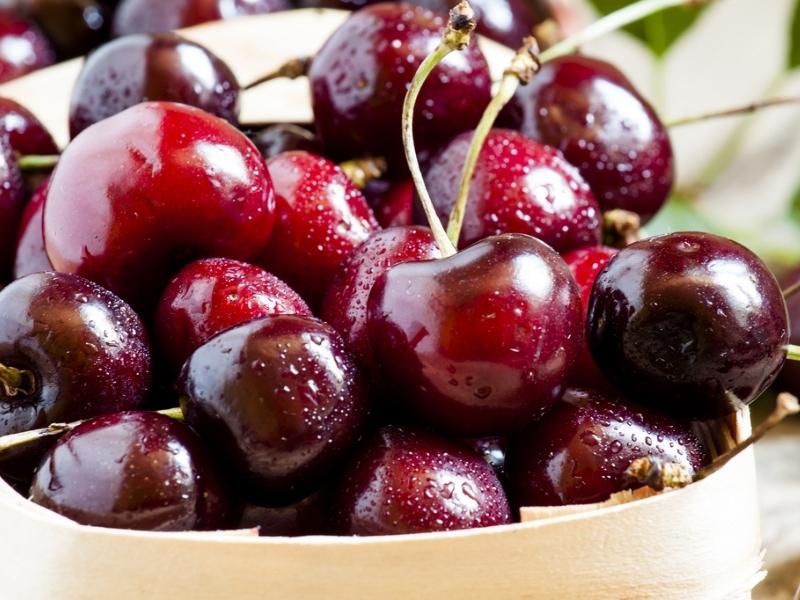
The Sylvia is yet another Canadian cherry variety. It comes as a result of cross-pollination between Van and Sam cherries.
The Sylvia cherry is round in shape with a bright, dark red hue.
Its incredible sweet flavor makes it an ideal candidate for snacking when fresh.
While the tree is self-fertile, better results are produced when it is cross-pollinated with other trees, such as Skeena and Kordia.
Sylvia cherries are grown not just in Canada, but also in the US, UK, and Australia.
16. Santina
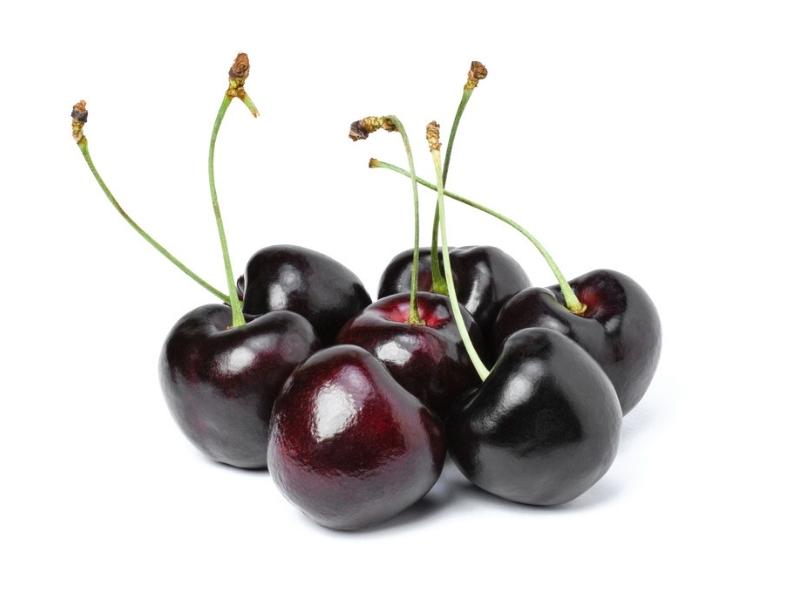
The Santina is a flat, heart-shaped, reddish-black cherry hailing from Canada.
Firm and mildly sweet with a slight acidity, it’s just as tasty as it is pretty.
They’re fantastic when fresh, but they also make delicious dried cherries.
Santina is highly nutritious, to boot. These cherries are a great source of vitamin C, potassium, and manganese.
Rich in antioxidants, they’re also good for the heart.
Fun fact: This self-fruiting cherry is popular among gardeners because it is highly abundant and crack-resistant.
17. Regina

The Regina is a German cherry produced by crossbreeding Rube and Schneiders Spate Knorpelkirsche cultivars.
While originally from Germany, you’ll find Regina cherries in other European countries as well as in Oregon.
Regina cherries are large with dark red skin and flesh. It is firm and crack-resistant, yet very succulent.
The combo of sweet and tart flavors gives off a wonderful cherry essence vibe.
Fun fact: Regina cherries are considered the most successful sweet cherry variety in Germany.
18. Emperor Francis

The Emperor Francis is a popular British cherry beloved for its extremely sweet flavor.
This cherry variety has yellow flesh and skin and is wonderfully smooth and creamy.
With its impeccable taste and textures, the Emperor Francis cherry tastes fantastic raw. It’s also ideal for making fruits and jellies.
Crack-resistant, it isn’t just popular among consumers, but gardeners and farmers as well.
19. Coral Champagne
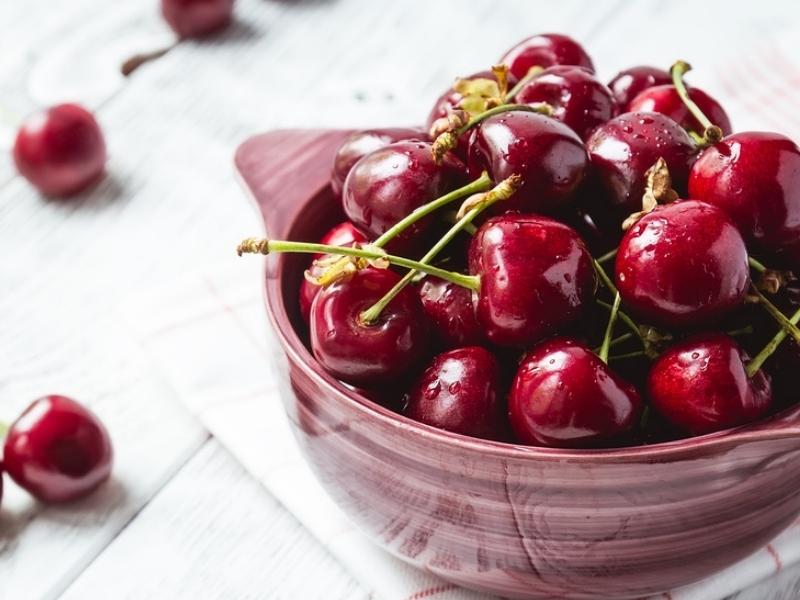
The origins of the Coral Champagnes are unknown.
What we know about them is that they’re equally as large and gorgeous as they are delicious.
Their skin is glossy and dark red in hue. Their flesh, which is hot pink in color, is firm and sweet with just a hint of acidity.
These characteristics make the Coral Champagne the third most widely planted cherry in California. Bing and Tulare are first and second.
Its only downside is that it is prone to cracking.
20. Black Tartarian
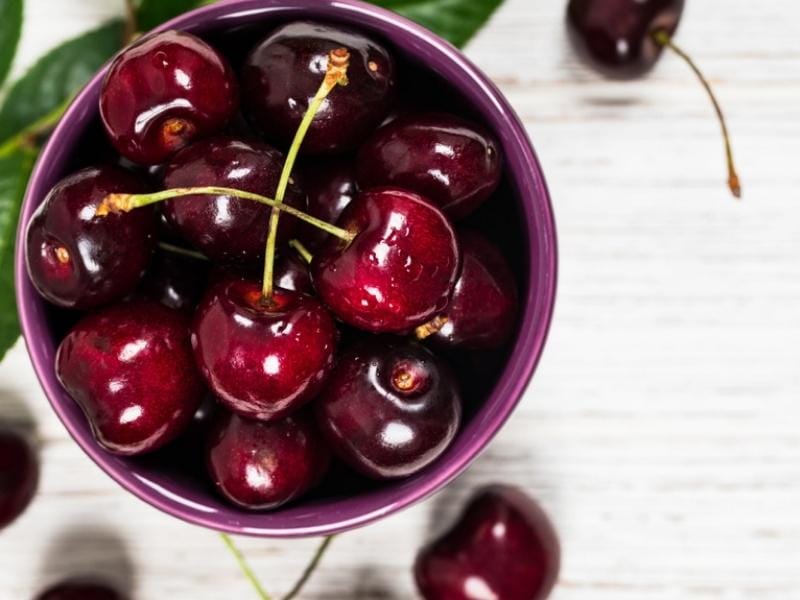
The Black Tartarian is a Russian cherry that goes all the way back to the 1700s.
This ancient cherry is sweet and juicy with dark red flesh and a heart-shaped appearance.
It’s delicious when fresh, and also ideal for making preserves.
If you’re looking for an easy-growing cherry tree, go for the Black Tartarian.
Unlike other cherry varieties that need cold climates, this cherry grows well under the heat of the sun.
They can’t self-pollinate, though, so be sure to plant other cherry varieties alongside it.
Stella, Van, and Bing are ideal pollinators for the Black Tartarian.
Sour Cherries
Where sweet cherries are great for snacking, their sour counterpart is ideal for baking.
Sour cherries, as you can probably deduce from their name, have a lower sugar content and a higher acidity level.
It’s not a bad thing, though. Their tartness gives sour cherries a bright pop of flavor.
When cooked, you’ll bring out their natural sugars, producing a great balance of flavors.
That’s what makes sour cherries the best cherries for making jams.
21. Montmorency Cherries
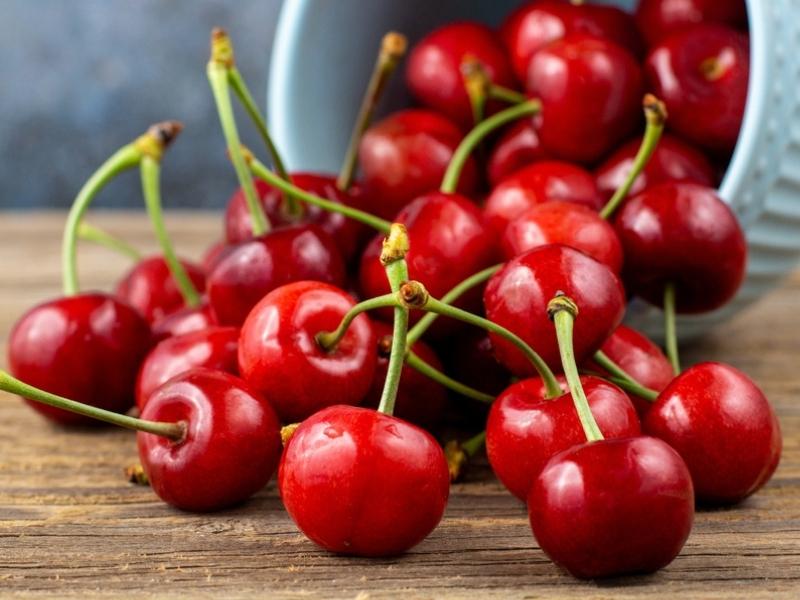
While they originated in France, Montmorency cherries are most widely grown in Michigan. Hence, are very popular in the Midwest.
They’re small, light red in color, and with an incredible tart flavor balanced with a very subtle sweetness.
Cook these cherries with sugar, and you’ll make a wonderful cherry pie filling and a scrumptious jam.
22. Morello Cherries
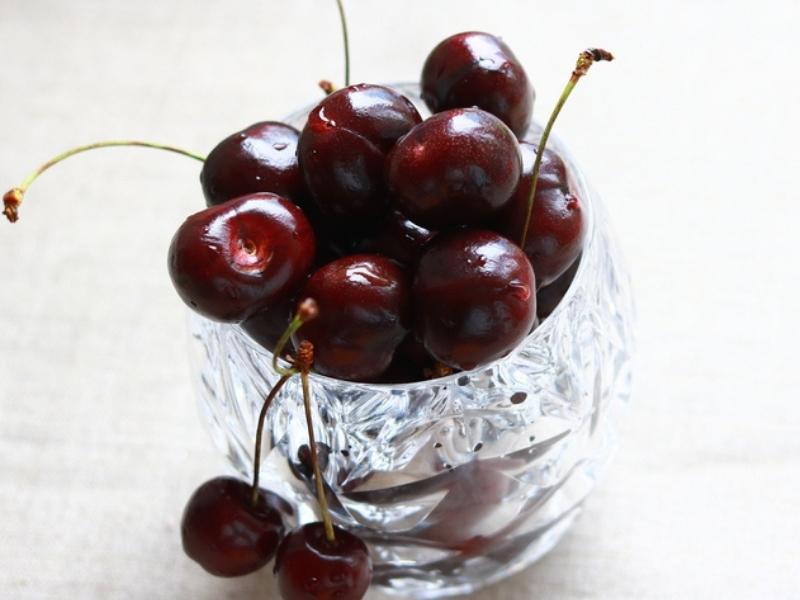
Morello cherries have a deep red, almost black skin and firm flesh with an incredibly sour flavor.
That said, they’re not ideal for snacking when raw.
They are, however, perhaps the most popular variety used in jams, pies, and baked goods.
23. Early Richmond
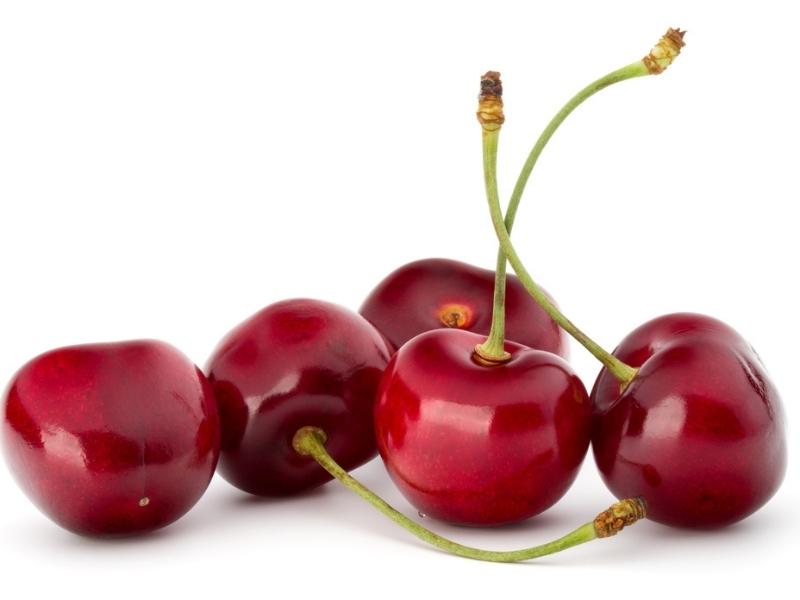
The Early Richmond is a medium-sized cherry with bright red skin and juicy, yellow flesh.
Wonderfully bright, tart, and tangy, one bit of this cherry will definitely make your mouth pucker.
It might not be ideal for snacking, but it’s excellent for baking. It’s also a fantastic ingredient in making cocktails.
As a self-fertile tree, an Early Richmond doesn’t require other trees to bear fruit.
24. Meteor Cherries
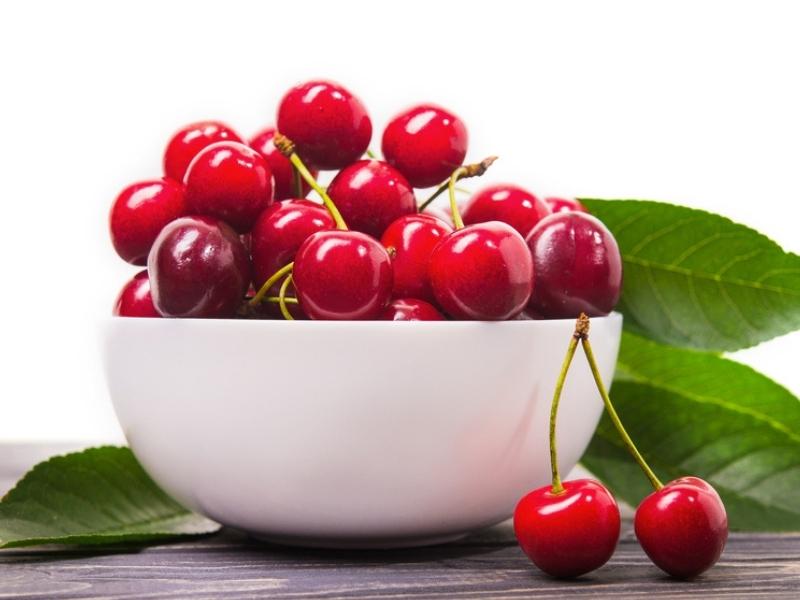
Meteor cherries are a species of cherries belonging to the Amarelle group.
They’re large in size with bright and shiny red skin and yellowish flesh.
Just like other sour cherries, Meteors are too tart and tangy to be consumed raw.
Instead, use Meteor cherries to make pies, juices, jams, and jellies.
Sweet and Sour Cherries
25. Maraschino Cherries
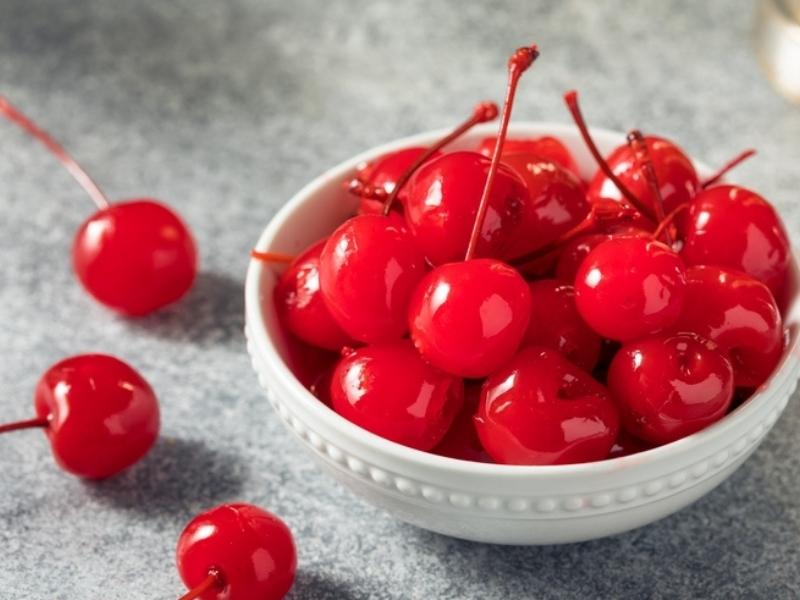
Last but not least is perhaps the most popular cherry known to man – the Maraschino.
But, did you know that Maraschinos aren’t actually a type of cherry?
Maraschino is a preservation method achieved by soaking cherries in syrup.
Maraschino cherries can be made from either sweet or sour cherry varieties because they’re preserved in sweet syrup, anyway.
